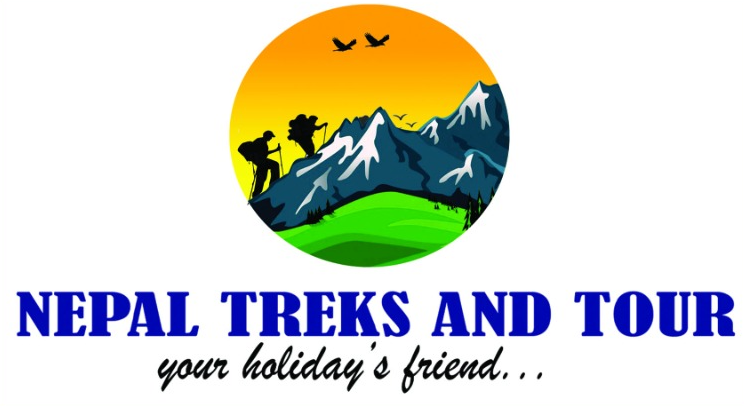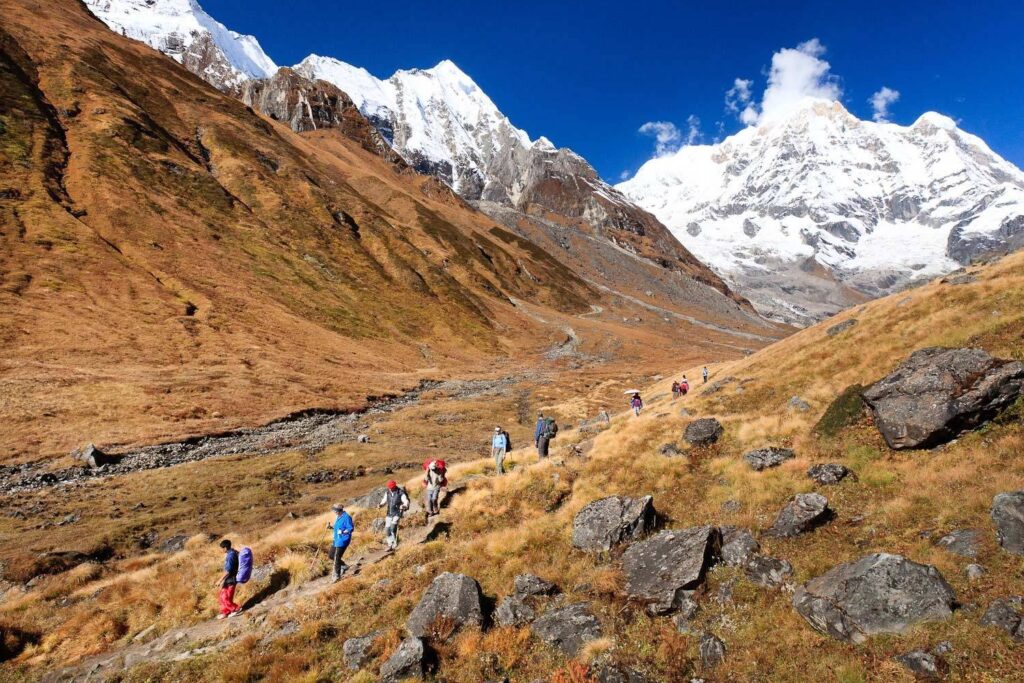Trekking in Nepal is not just an outdoor adventure — it’s a journey through nature, culture, and personal discovery. With eight of the world’s highest peaks, charming mountain villages, and welcoming locals, Nepal offers some of the most breathtaking trekking experiences on Earth.
Whether you’re walking beneath the mighty Everest, exploring the Annapurna trails, or wandering through the peaceful Langtang Valley, every step in Nepal feels magical.
Why Trekking in Nepal is So Special
Nepal is often called a trekker’s paradise, and for good reason. The country offers a mix of rugged landscapes, ancient culture, and spiritual serenity that few destinations can match.
Highlights of Trekking in Nepal:
- Walk among the world’s tallest peaks — including Mount Everest (8,848m)
- Experience Sherpa hospitality and stay in cozy tea houses
- Explore ancient monasteries, waterfalls, and glaciers
- Enjoy trails for all skill levels, from beginners to seasoned climbers
- Capture stunning sunrises over Himalayan ranges
- Visual Element Suggestion: Include a panoramic image of trekkers walking through rhododendron forests with the Annapurna range in the background.
Top Trekking Destinations in Nepal
1. Everest Base Camp Trek (5,364m)
A legendary route that takes you to the foot of the world’s highest mountain. Perfect for those seeking challenge and grandeur.
Duration: 12–14 days
Best Time: March–May, October–November
Famous for its diverse landscapes — from lush forests to arid high passes. A favorite among both beginners and experts.
Duration: 10–15 days
Highlight: Crossing the Thorong La Pass (5,416m)
Close to Kathmandu, yet remote and peaceful. It offers rich Tamang culture and breathtaking glacier views.
Duration: 7–10 days
A quiet alternative to the busy trails, this route circles the eighth-highest mountain in the world.
Duration: 12–16 days
Highlight: Larke La Pass (5,160m)
A short and scenic trek offering epic views of Machhapuchhre (Fishtail Peak).
Duration: 5–7 days
Perfect For: Short-time travelers and first-time trekkers
Visual Element Suggestion: Add a map graphic of Nepal highlighting these five trekking regions for quick visual understanding.
Best Time for Trekking in Nepal
Nepal has two main trekking seasons:
Autumn (September–November): Clear skies, mild temperatures, and great visibility.
Spring (March–May): Lush flowers, green forests, and warmer weather.
For off-season adventurers, winter treks (like lower Annapurna or Ghorepani) and monsoon treks (like Upper Mustang or Dolpo) are also possible.
What to Pack for Trekking in Nepal
A good trek starts with good preparation. Here’s a simple checklist:
✅ Trekking boots & socks
✅ Layered clothing (base, insulation, outer shell)
✅ Warm hat & gloves
✅ Sleeping bag (rated for -10°C)
✅ Trekking poles
✅ Water purification tablets
✅ Snacks & energy bars
✅ Sunscreen & sunglasses
Visual Element Suggestion: Add an infographic of a “Trekker’s Packing List” with illustrated gear icons.
Trekking Permits and Regulations
Most trekking regions require specific permits:
TIMS Card (Trekkers’ Information Management System)
National Park / Conservation Area Permits
Restricted Area Permits (for Upper Mustang, Manaslu, etc.)
Always carry your permits during the trek. It’s both legal and important for safety tracking.
Tea House vs. Camping Treks
Nepal offers two main trekking styles:
Tea House Trekking: Stay in local lodges with meals and hot tea. Great for comfort and culture.
Camping Trekking: Perfect for remote routes where lodges are unavailable. Offers full wilderness experience.
Tips for Safe and Enjoyable Trekking
- Acclimatize properly to avoid altitude sickness
- Walk slowly and hydrate often
- Respect local traditions and environment
- Hire a licensed guide and porter
- Carry travel insurance covering high-altitude trekking
Trekking in Nepal is more than just reaching a destination — it’s about experiencing nature, meeting kind-hearted people, and rediscovering your inner strength.
Whether you dream of standing beneath Mount Everest or walking through rhododendron forests, Nepal promises an adventure that touches your heart forever.
Frequently Asked Questions
1. What is the best time for trekking in Nepal?
The best seasons are autumn (Sept–Nov) and spring (Mar–May), offering clear skies and pleasant weather.
2. Do I need a guide for trekking in Nepal?
Yes, hiring a licensed guide is highly recommended (and mandatory for some regions) for safety and navigation.
3. Which are the most popular treks in Nepal?
Top treks include Everest Base Camp, Annapurna Circuit, Langtang Valley, Manaslu Circuit, and Mardi Himal Trek.
4. How difficult are treks in Nepal?
Difficulty varies. Some routes like Poon Hill or Langtang are beginner-friendly, while Everest Base Camp and Manaslu Circuit are moderate to challenging.
5. What permits do I need to trek in Nepal?
Most treks require a TIMS Card and Conservation Area/National Park Permit. Restricted areas need special permits.
6. Can beginners go trekking in Nepal?
Absolutely! There are many easy treks like Ghorepani Poon Hill, Mardi Himal, and Langtang Valley perfect for first-timers.
7. How much does trekking in Nepal cost?
Costs vary by route and duration. On average, $700–$1,500 covers permits, food, guides, and accommodation.
8. Is altitude sickness common in Nepal?
Yes, especially above 3,000 meters. Proper acclimatization and hydration are key to prevention.
9. What should I pack for a Nepal trek?
Pack trekking boots, layered clothes, sleeping bag, water purification tablets, and essential gear for comfort and safety.
10. Are there short treks available near Kathmandu or Pokhara?
Yes. Treks like Chisapani–Nagarkot and Australian Camp are great short options.
11. Can I trek solo in Nepal?
Solo trekking is allowed in many areas but not in restricted zones like Manaslu or Upper Mustang.
12. Why choose Nepal for trekking?
Because Nepal combines world-class mountain views, friendly locals, affordable costs, and rich culture, making it the world’s top trekking destination.







